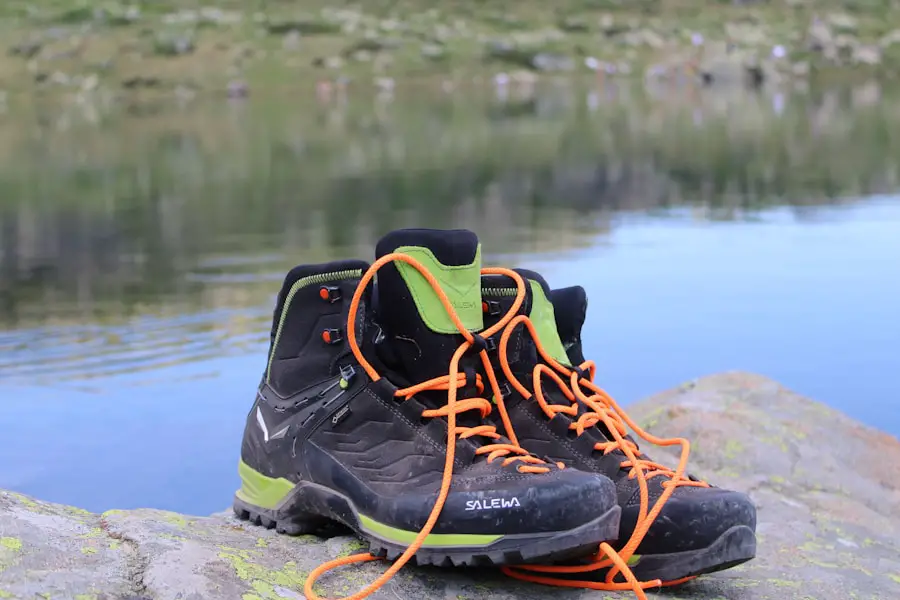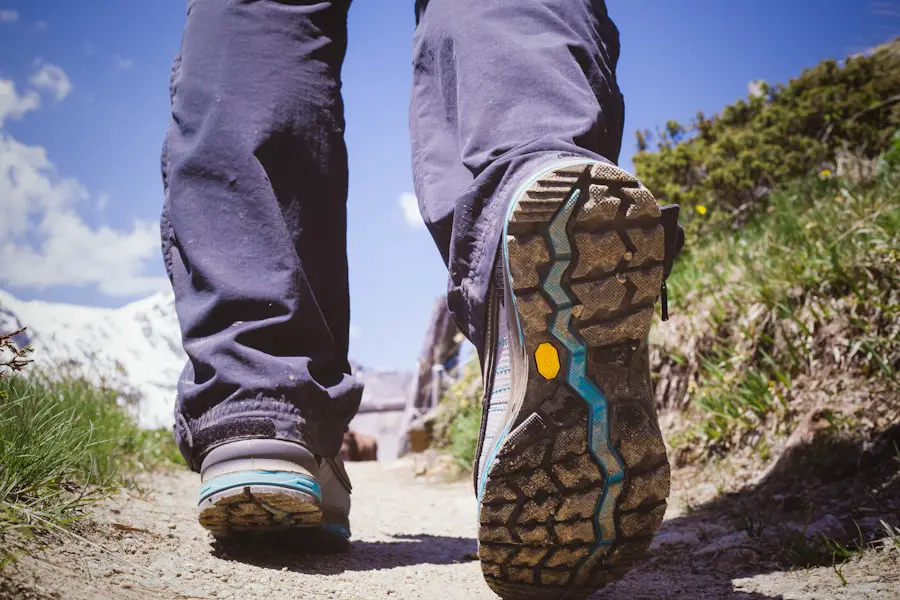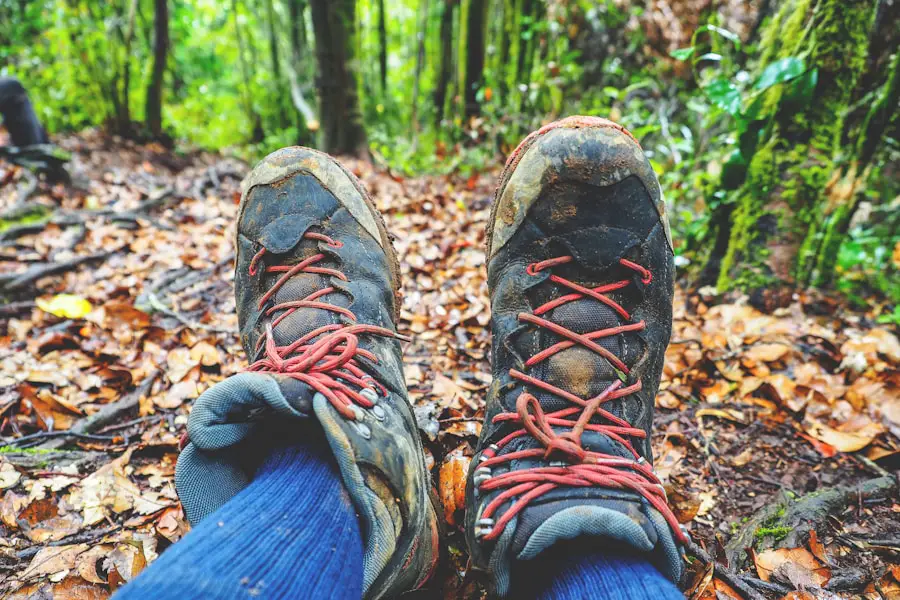Selecting the appropriate footwear is paramount for any hiking enthusiast, as it can significantly influence both comfort and performance on the trail. The right hiking boots or shoes should provide adequate support, traction, and protection tailored to the specific terrain and conditions you will encounter. For instance, if you plan to hike on rocky or uneven surfaces, a boot with a stiffer sole and enhanced ankle support is essential.
This type of footwear helps to stabilize your foot and prevent injuries, such as sprains or fractures, that can occur when navigating challenging landscapes. Moreover, the choice between boots and shoes often depends on personal preference and the nature of the hike. Hiking boots typically offer more support and protection, making them ideal for longer treks or rugged trails.
On the other hand, trail running shoes may be suitable for lighter hikes or fast-paced adventures where agility is prioritized over support. It’s crucial to try on various styles and brands, as fit can vary significantly. A well-fitted shoe should feel snug but not constricting, allowing for some movement of the toes while ensuring that your heel remains in place.
Key Takeaways
- Choose footwear that is appropriate for the terrain and weather conditions
- Select socks made of moisture-wicking material to keep your feet dry and prevent blisters
- Gradually break in your hiking boots to prevent discomfort and blisters on the trail
- Practice good foot hygiene and care to prevent issues such as athlete’s foot and blisters
- Use moleskin and blister bandages to protect hot spots and prevent blisters while hiking
- Adjust your lacing technique to relieve pressure points and improve comfort
- Manage moisture and friction by using powders and lubricants to prevent blisters
- Take regular breaks and rest when needed to prevent foot fatigue and blisters
Proper Sock Selection
The importance of selecting the right socks cannot be overstated when it comes to hiking. Socks serve as a critical barrier between your feet and your footwear, playing a vital role in moisture management and temperature regulation. Wool and synthetic blends are often recommended due to their moisture-wicking properties, which help keep your feet dry by drawing sweat away from the skin.
Cotton socks, while comfortable in casual settings, tend to retain moisture, leading to blisters and discomfort during extended hikes. In addition to material, the thickness of the sock can also impact your hiking experience. Thicker socks provide additional cushioning and warmth, making them suitable for colder conditions or when wearing heavier boots.
Conversely, thinner socks may be preferable in warmer weather or when using lightweight footwear. It’s advisable to consider the overall fit of your boot when selecting sock thickness; a thicker sock may require a half-size larger boot to accommodate the extra bulk without causing discomfort.
Breaking in Your Hiking Boots

Once you have chosen the right hiking boots, it is essential to break them in before embarking on a long trek. New boots can be stiff and may cause discomfort if worn for extended periods without prior acclimatization. The breaking-in process allows the materials to soften and conform to the unique shape of your feet, reducing the likelihood of blisters and hot spots during your hike.
A gradual approach is recommended; start by wearing your boots around the house or during short walks to allow your feet to adjust. As you break in your boots, pay attention to any areas that may cause discomfort or pressure points. If you notice any persistent issues, consider adjusting your lacing technique or trying different sock combinations to alleviate pressure.
It’s also beneficial to wear your boots during various activities, such as hiking on different terrains or inclines, to simulate real hiking conditions. This practice not only helps in breaking them in but also allows you to assess their performance and comfort level before tackling more challenging trails.
Foot Care and Hygiene
| Metrics | Data |
|---|---|
| Number of people with diabetes who receive foot care education | 75% |
| Percentage of elderly population with foot problems | 30% |
| Number of foot ulcers caused by poor foot hygiene | 10,000 per year |
| Percentage of people who wash their feet daily | 85% |
Maintaining proper foot care and hygiene is crucial for any hiker looking to enjoy their outdoor adventures without discomfort or injury. Regularly inspecting your feet for any signs of blisters, cuts, or infections is essential, especially after long hikes. Keeping your feet clean and dry can prevent many common foot ailments.
After a hike, wash your feet with soap and water, ensuring that you dry them thoroughly, particularly between the toes where moisture can accumulate. Additionally, consider using foot powder or antifungal sprays to help manage moisture and prevent athlete’s foot or other fungal infections. Keeping toenails trimmed and filed can also prevent painful ingrown nails that may develop during long hikes.
If you notice any persistent pain or unusual changes in your feet, it’s wise to consult a healthcare professional who specializes in podiatry. Taking proactive steps in foot care can enhance your overall hiking experience by ensuring that your feet remain healthy and comfortable throughout your journey.
Using Moleskin and Blister Bandages
Even with the best preparation, blisters can still occur during hikes due to friction and moisture buildup. Having moleskin and blister bandages on hand is essential for treating these painful irritations promptly. Moleskin is a soft fabric with an adhesive backing that can be cut into various shapes and sizes to cover blisters or areas prone to friction.
By applying moleskin directly over a blister or hotspot, you create a protective barrier that reduces further irritation while allowing the area to heal. Blister bandages are another effective tool for managing foot discomfort on the trail. These specialized bandages often contain a gel or cushioning layer that provides relief from pressure while promoting healing.
When applying blister bandages, ensure that the area is clean and dry before placing the bandage over the blister. It’s advisable to carry a small first-aid kit that includes moleskin and blister bandages so that you can address any issues as they arise during your hike.
Adjusting Your Lacing Technique

Customizing Lacing for Uneven Surfaces
Conversely, tightening the laces around the ankle can provide additional support when traversing uneven surfaces. There are several lacing techniques that hikers can employ to enhance comfort and fit.
The Heel Lock Method for Preventing Heel Lift
The “heel lock” method is particularly effective for preventing heel lift, which can lead to blisters. To achieve this, lace your boots normally until you reach the last eyelet; then, instead of crossing the laces over each other, thread them through the top eyelet on the same side before tying them off. This technique creates a tighter fit around the ankle without compromising overall comfort.
Enhancing Comfort and Fit with Proper Lacing
By employing proper lacing techniques, hikers can enhance their overall comfort and fit, leading to a more enjoyable hiking experience.
Managing Moisture and Friction
Moisture management is critical in preventing blisters and maintaining foot comfort during hikes. Sweaty feet can lead to increased friction within your boots, resulting in painful blisters that can cut a hike short. To combat this issue, consider using moisture-wicking socks made from synthetic materials or merino wool that help draw sweat away from your skin.
Additionally, choosing breathable footwear with adequate ventilation can help keep your feet dry by allowing moisture to escape. Incorporating foot powder into your routine can also be beneficial for managing moisture levels. Applying foot powder before putting on socks can help absorb excess sweat throughout your hike.
If you find yourself hiking in particularly humid conditions or after heavy rain, taking breaks to remove your boots and allow your feet to air out can significantly reduce moisture buildup.
This practice not only helps prevent blisters but also enhances overall comfort during long treks.Knowing When to Rest and Take Breaks
Understanding when to rest and take breaks is an often-overlooked aspect of hiking that can greatly affect performance and enjoyment on the trail. Fatigue can set in quickly during strenuous hikes, leading to decreased focus and increased risk of injury if not managed properly. It’s essential to listen to your body; if you start feeling tired or notice signs of discomfort in your feet or legs, it’s time to take a break.
Strategically planning rest stops can also enhance your hiking experience. Consider taking breaks at scenic viewpoints or shaded areas where you can enjoy a snack and hydrate while allowing your body to recover. Short breaks every hour or so can help maintain energy levels and prevent burnout during longer hikes.
Additionally, using these moments to check your feet for any signs of blisters or discomfort allows for early intervention before issues escalate into more significant problems that could hinder your adventure.
If you’re looking for tips on how to avoid blisters while hiking, you may also be interested in reading an article on waterproof sneakers for your spring 2025 travels. These sneakers can help keep your feet dry and comfortable during long hikes, reducing the risk of developing blisters. Check out the article here for more information.
Love travel? Join Our Facebook Community For More Tips.
FAQs
What are blisters?
Blisters are small pockets of fluid that form on the outer layers of the skin. They are often caused by friction or pressure on the skin.
How can I avoid getting blisters while hiking?
To avoid getting blisters while hiking, it’s important to wear properly fitting and broken-in footwear, use moisture-wicking socks, keep your feet dry, and use blister prevention products such as moleskin or blister pads.
What type of socks should I wear to prevent blisters while hiking?
Wearing moisture-wicking socks made of synthetic materials or merino wool can help prevent blisters by keeping your feet dry and reducing friction.
How should I choose the right hiking footwear to prevent blisters?
Choose hiking footwear that fits properly and has been broken in before your hike. Look for shoes or boots with good arch support and cushioning to reduce friction and pressure on your feet.
Are there any products I can use to prevent blisters while hiking?
There are several products available to help prevent blisters while hiking, including moleskin, blister pads, and lubricants such as petroleum jelly or specialized anti-blister balms.
What should I do if I feel a blister forming while hiking?
If you feel a blister forming while hiking, it’s important to address it as soon as possible. You can apply a blister pad or moleskin to the affected area to reduce friction and protect the blister from further irritation.
